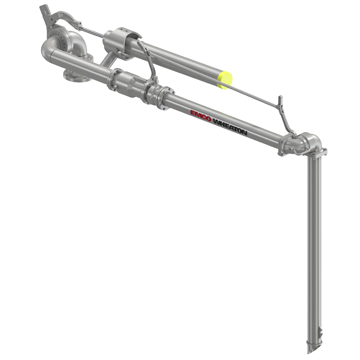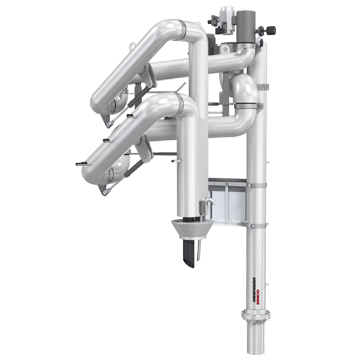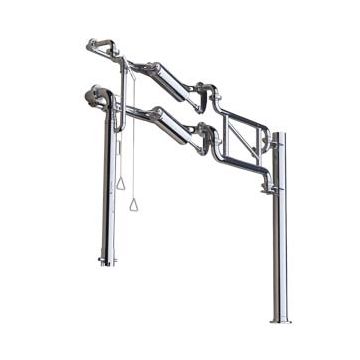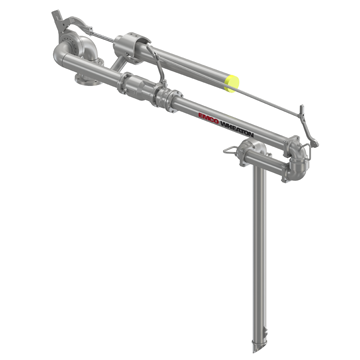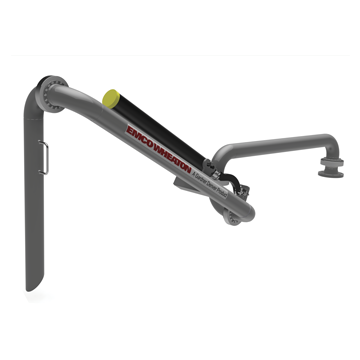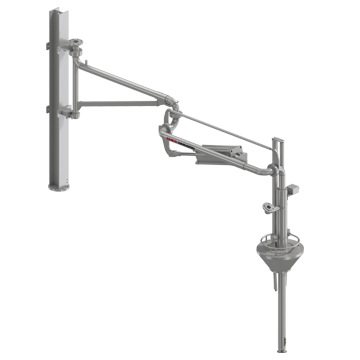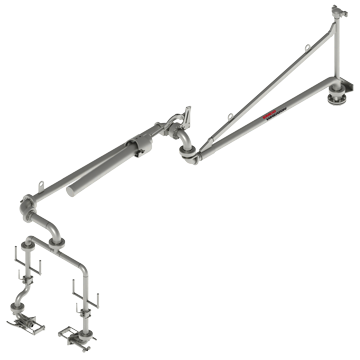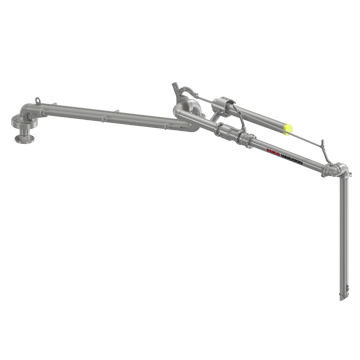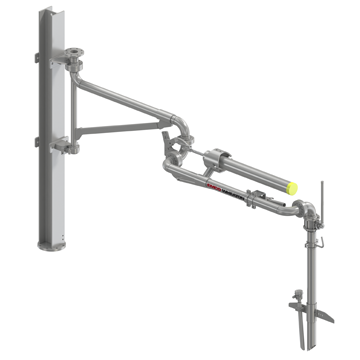Choose a different country or region to see the content specific to your location
 Global (EN)
Global (EN)
How can we help you?
Top Loading Arms
Emco Top Loading arm systems are especially designed for top loading of road or rail tankers using the manhole or any kind of fixed connection like couplers.
Because of robust and high quality design of swivel joints and the precise loading arm balancing handling of the loading arm is very convenient. The loading arms offer a long life time under high frequent conditions as well as further numerous benefits.
- Multiple balancing systems
- Various numbers of accessories
- Various numbers of safety equipment
- Arms can be equipped with different heating systems
- PTFE lined version
Top Loading Arms Applications
Emco Wheaton provides the most complete range of top loading arms for different applications. Apart from rail and truck loading applications, the top loading arms can also be used for vapour recovery, marine and other applications when used with an engineered design.
- Rail car
- Tank truck
- Petroleum and mineral
- Vapour recovery
- Marine
- Sulphur
- Bitumen
- Vapour recovery
Top Loading Vapour Recovery Arms
Vapour recovery is the process by which vapours (VOC‘s) displaced during the filling of an empty tanker compartment or service station fuel storage tank are collected for processing rather than expelled into the atmosphere.Emco Wheaton top loading with a concealed manhole, operators can further maximise the level of protection offered to both operators and the environment. These top loading arms meet all relevant legal requirements and regulations (e.g. EU Norm, German TA-Luft).The top loading arms are cost-effective loading vapour recovery options due to their reduced weight and minised offset. For spaces such as existing loading stations with low roof heights, this feature can prove beneficial.
Why is Vapour Recovery Necessary?
The hydrocarbon vapours given off by petroleum products, particularly petrol (gasoline), are also known as VOC‘s (volatile organic compounds), and are considered to be pollutants having the following damaging effects; As local atmospheric pollutants contributing to smog and haze that occur over large cities.
- As “greenhouse gases“ contributing towards global warming.
As toxic and carcinogenic substances, causing human health problems. - The introduction of the VOC legislation in the European community was based upon the following estimates of the amount of pollution occurring within member states.
- 10 million tons per year of VOC emissions from petrol and solvents.
- 500,000 tons per year of VOC emissions, 5% of the total, occur during storage and distribution of petroleum spirit, the majority in urban areas.
- To reduce emissions occurring during loading and storage at terminals to 0.01% w/w (weight by weight) of total throughput.
